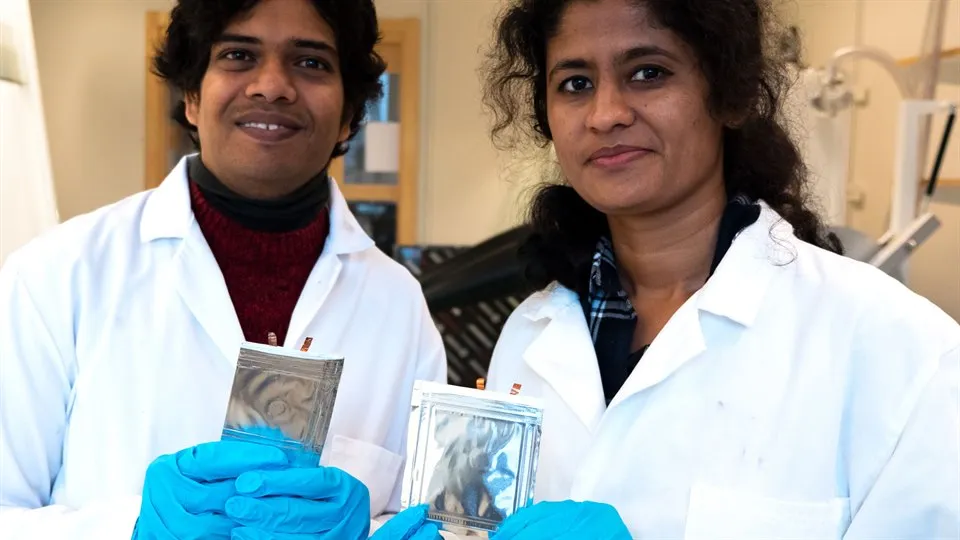Litium‑ion batteries
Researchers at FSCN research centre have developed high-capacity batteries using a novel nanomaterial.
These new results, published in Scientific Reports (2019), show an increase of capacity by 10%. This increase will be of importance for the electrical car industry.
New nanomaterials for better batteries
The research at Mid Sweden University has solved a problem that has eluded the international battery research community for a long time. It has been known that silicon can increase the storage capacity of lithium-ion batteries for a long time, but so far no one has been able to demonstrate a method that is potentially scalable for industrial manufacturing.
"Our new anode material consists of graphene and silicon nanoparticles. In our first experiments, the material consists of 6% silica nanoparticles. This increases the storage capacity of the entire battery by10%. Now we are working to increase the proportion of silicon in the material to reach a level where the batteries will be 15% better", says Manisha Phadatare, PhD in materials science at FSCN research centre, who conducted the study together with Rohan Patil and other battery researchers at Mid Sweden University.
"It is extremely important for electric cars to be able to store large quantity of energy per weight. This means that any increase in storage capacity can result in longer mileage or you can choose to convert this into cheaper and lighter batteries", says Nicklas Blomquist, PhD in materials science at the FSCN research center.
"Our process for producing this kind of nanomaterials can potentially be scaled up to industrial levels, which results in relevance beyond the academic research. Previous studies have shown that nanosilicon can increase the storage capacity, but the methods have not been potentially scalable in the same way as our new method," says Håkan Olin, professor of materials physics at Mid Sweden University.
"Another advantage of our technology is that the raw materials largely consist of cheap silicon powder and graphite. This makes the technology more environmentally friendly and also the batteries become cheaper," says Manisha Phadatare.
The research was done in collaboration with researchers at Uppsala University and D.Y. Patil Education Society University, Kolhapur in India. The research has been funded by the Swedish Energy Agency, Vinnova, Knowledge Foundation, STINT and the EU, and has been supported by a number of companies where a particularly close collaboration has taken place with Vesta Si, 2D Fab, and Woxna Graphite. Continued research is being carried out within the project DRIVE where the researchers take a broad grasp on green energy, energy storage and distribution and battery research is focused on developing the next generation of batteries.
The project for lithium ion batteries is mainly funded by Swedish Energy Agency (grant number: 2014-001912) and co-funded by EU Regional fund (KM2 2016-2019 and DRIVE 2019-2021), Knowledge Foundation, STINT (IB-2018 7535), and Vinnova (grant number: 2017-03616)
During the period 2020-2022 the project evolves to next scale level, focusing on upscaling issues of the these new silicon-composite electrodes together with its partners 2D Fab, Vesta Si and Uppsala University ÅABC and is funded by the innovation program SIO grafen a joint effort by Vinnova, Formas, and Energimyndigheten
Facts
Project period
140701-221201
Research centers
Subjects
Research groups
Project leader

Project members

Read more





